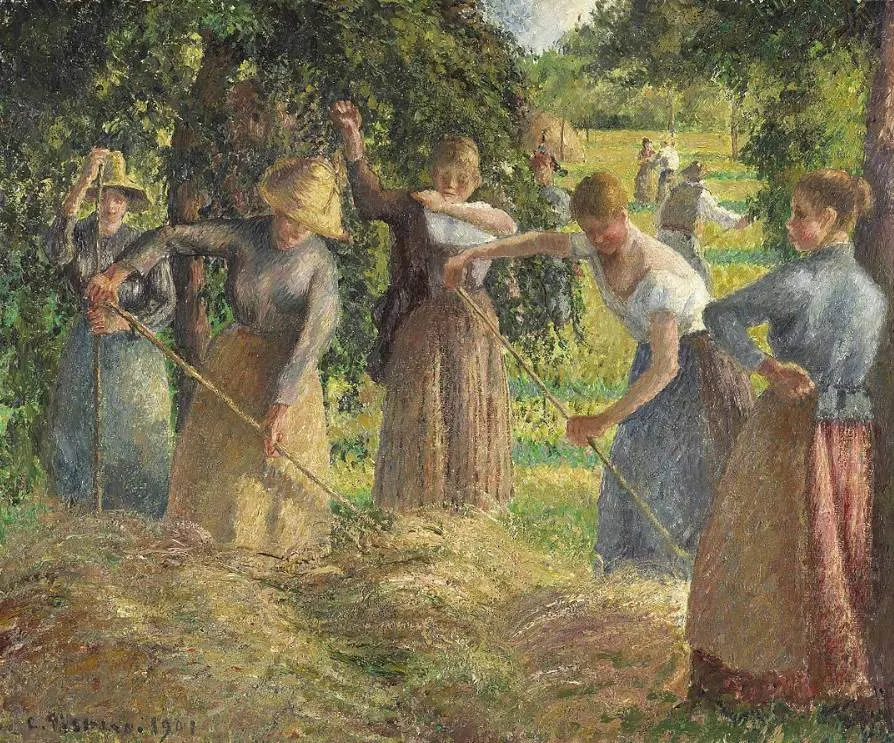One of the most stunning landmarks in Ottowa, the capital city of Canada, houses a fascinating collection of Canadian, American, and European art.
The institution was established in 1880 together with the Royal Canadian Academy of Arts. It was initially housed at the former Second Supreme Court of Canada building just west of Parliament Hill.
It wasn’t until 1913 that the National Gallery Act was passed which established the museum as the National Gallery of Canada.
The museum moved quite a bit throughout its history. First to the Victoria Memorial Museum building in 1911 followed by a move to the Lorne building in 1960.
When this building didn’t suffice anymore, renowned Canadian architect Moshe Safdie was hired to design a stunning glass and granite building located at Sussex Drive.
The museum reopened in its incredible new home in 1988 and houses a collection of over 93,000 works of art.
In this article, you’ll discover some of the most famous paintings at the National Gallery of Canada.
1. The Jack Pine – Tom Thomson
- Date created: 1916-1917
- Dimensions: 127.9 × 139.8 centimeters (50.3 × 55 inches)
The Jack Pine is a painting by Tom Thomson (1877-1917), a Canadian artist who is famous for his depictions of the Canadian landscape. This painting depicts the most widespread type of pine in Canada and is considered to be one of the most iconic Canadian paintings ever produced.
What makes this painting so remarkable is the tragic story of Thomson’s death the year that he completed this masterpiece. He died by drowning in Canoe Lake in Algonquin Park, the location where he produced sketches to complete this work. He died a year before the “Group of Seven” was established but is considered to be an unofficial member.
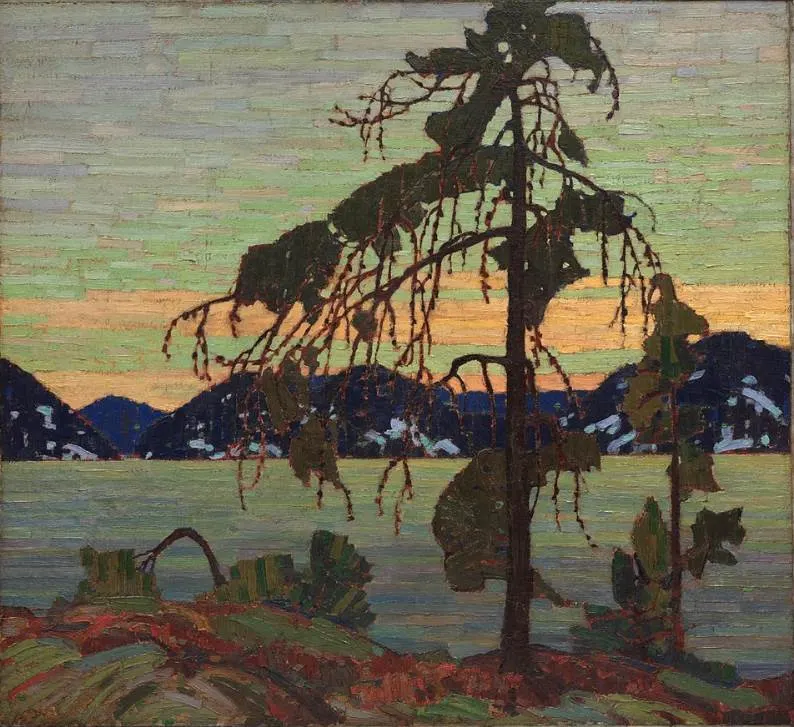
2. The Death of General Wolfe – Benjamin West
- Date created: 1770
- Dimensions: 152.6 x 214.5 centimeters (60 x 84.4 inches)

The Death of General Wolfe is a painting by British-born American artist Benjamin West (1738-1820), a man who became renowned for his historical paintings. The painting depicts the tragic death of General James Wolfe (1727-1759) of the Royal Army during the Battle of Quebec in 1759.
Wolfe died around the time that the British Army won a victory against the French Army. It was a pivotal moment in the Seven Years’ War and defined the future of North America. Wolfe is depicted as a martyred hero. The painting features multiple people who were not present at the time which was unusual in the 18th century.

3. The Triumph of Mordecai – Sandro Botticelli
- Date created: 1476
- Dimensions: 48.3 × 43.2 centimeters (19 x 17 inches)
The Triumph of Mordecai is a painting by Sandro Botticelli (1445-1510), the Italian artist who produced some of the most famous Renaissance paintings in history. This work was part of a commission that involved 6 different paintings related to the Story of Esther in the Hebrew Bible.
The painting was commissioned to decorate two wedding chests. Esther was a virtuous woman which made her a popular subject for such a gift. This painting depicts a scene from the second chest. We see Esther’s uncle Mordecai who triumphed over Haman, a man who plotted to kill the Jews.

4. Saint Francis and Brother Leo Meditating on Death – El Greco
- Date created: 1600-1602
- Dimensions: 168.5 x 103.2 centimeters (66.3 x 40.6 inches)
Saint Francis and Brother Leo Meditating on Death is a painting by El Greco (1541-1614), the Greek-born artist who lived and worked in Spain during the final years of his life. The paintings of Domḗnikos Theotokópoulos, the artist’s real name, are distinctive in their use of color and swift brushstrokes.
The artist first moved to Venice from his native Crete, a colony of the Republic of Venice and an island that was known as Candia back then. Here he absorbed the use of color which characterized the rest of his career. He mastered the use of light while he lived in Toledo, Spain, a notion that is reflected by the shadow effect on the men’s robes.

5. Madonna and Child with Saint Roch and Saint Sebastian – Lorenzo Lotto
- Date created: 1521-1524
- Dimensions: 81.8 × 108.5 centimeters (32.2 × 42.71 inches)
Madonna and Child with Saint Roch and Saint Sebastian is a painting by Lorenzo Lotto (1480-1557), an Italian artist who grew up during the High Renaissance. It depicts the classical subject of the Virgin Mary with her child Jesus Christ who is accompanied by two saints.
On the left, you can see Saint Roch, a man who died in the 14th century and a patron saint of multiple places in Europe. On the right, you can see Saint Sebastian, a Christian saint who died during the persecution of Roman Emperor Diocletian during the late 4th century.
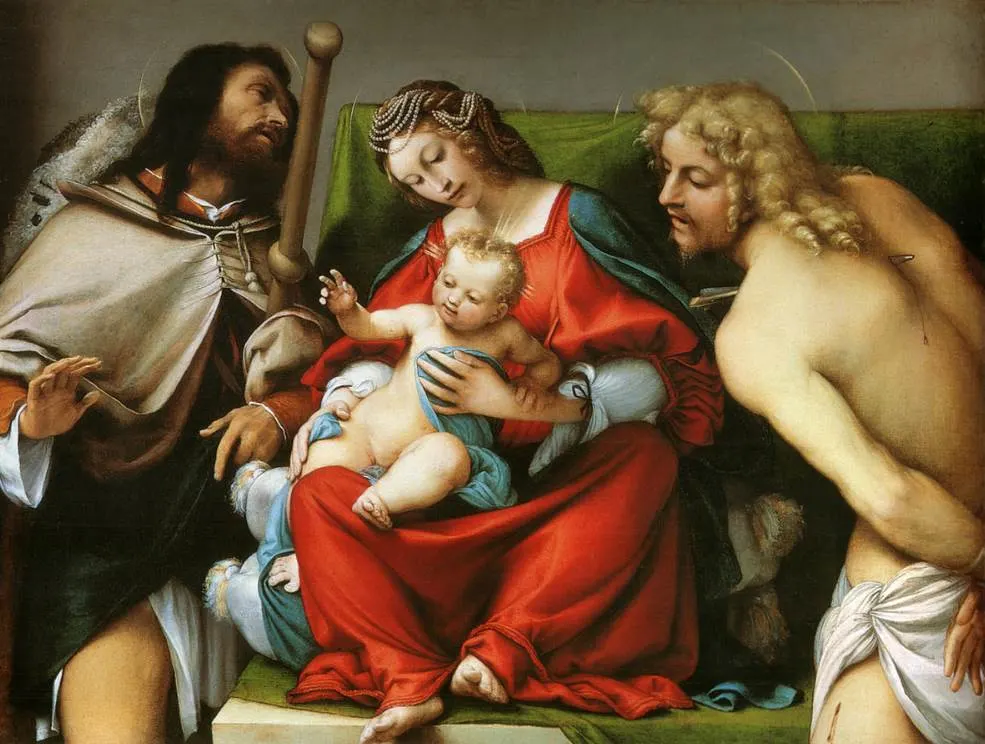
6. The Entombment – Peter Paul Rubens
- Date created: 1612-1614
- Dimensions: 88.3 x 66.5 centimeters (34.7 x 26.1 inches)
The Entombment is a painting by Peter Paul Rubens (1577-1640), the Flemish master who defined Baroque art in the 17th century. He spent nearly the entire first decade of the 17th century in Italy and this painting was completed just a few years after the returned to his native Antwerp in modern-day Belgium.
He learned a lot from the artists in Italy and especially the paintings of Caravaggio (1571-1610). This work was influenced by The Entombment of Christ by Caravaggio. It features a similar composition and the same use of chiaroscuro, which means the use of light and shadow to highlight certain elements.

7. Heroine from the Old Testament – Rembrandt van Rijn
- Date created: 1632-1633
- Dimensions: 109.2 x 94.4 centimeters (42.9 x 37.1 inches)
Heroine from the Old Testament is also known as “A Young Woman at her Toilet” and is one of the many fascinating paintings by Rembrandt van Rijn (1606-1669). It remains unclear which heroine the Dutch master depicted here and several suggestions have been made.
She’s clearly up to something so she may be Judith who is preparing to kill Holofernes by decapitating him. Another possibility is Esther, the Jewish heroine who saved the Jews by seducing King Ahasuerus of Persia. If she is Bathsheba then she will be visiting King David and commit adultery.
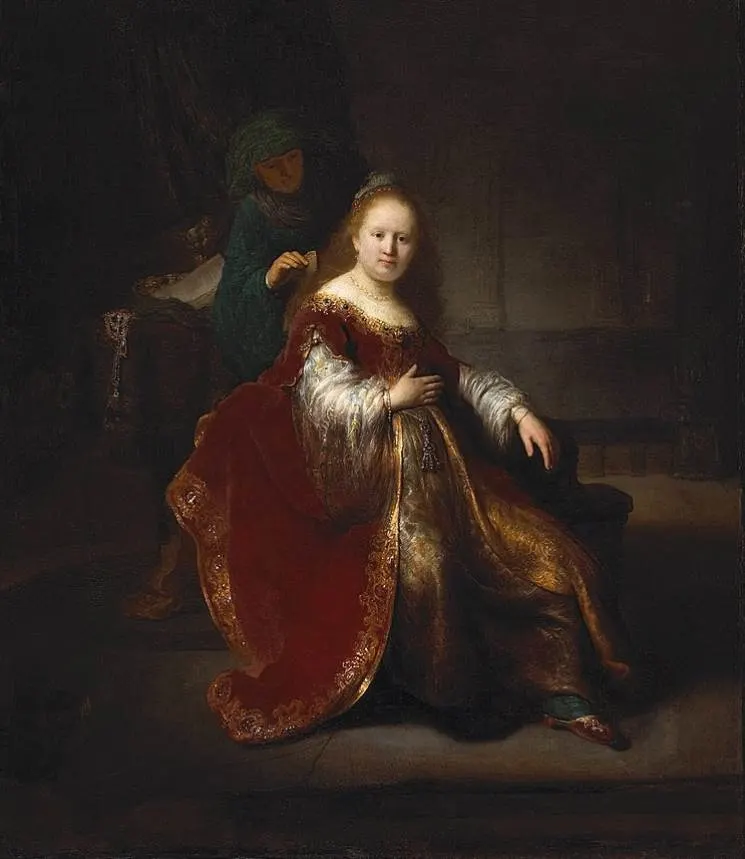
8. Shoeburyness Fishermen Hailing a Whitstable Hoy – J.M.W. Turner
- Date created: Before 1809
- Dimensions: 91.7 x 122.2 centimeters (36.1 x 48.11 inches)
Shoeburyness Fishermen Hailing a Whitstable Hoy is a painting by J.M.W. Turner (1775-1851), an English artist who specialized in landscapes and seascapes. This painting depicts a hoy, a small boat that ferried people and cargo, that is conquering the waves of the rough sea.
The painting was completed when Joseph Mallord William Turner was in his mid-thirties and already an established artist. It’s one of several paintings that be produced between 1808-1810 and depicts the landscape at the Thames estuary in the southeast of England.

9. Iris – Vincent van Gogh
- Date created: 1890
- Dimensions: 62.2 cm (24.4 in); width: 48.3 cm (24.4 x 19 inches)
Iris is the title of a painting by Vincent van Gogh (1853-1890) and is not to be confused with his other work titled “Irises.” Both works were, however, produced during the time that he stayed at the mental hospital of Saint-Rémy where he had checked himself in following his mental breakdown in Arles.
The subject matter of both the painting at the National Gallery of Canada and the larger work at the Getty Museum in Los Angeles is the same. It depicts flowers that were growing in the garden of the asylum, a place where the artist found an abundance of inspiration during his stay.
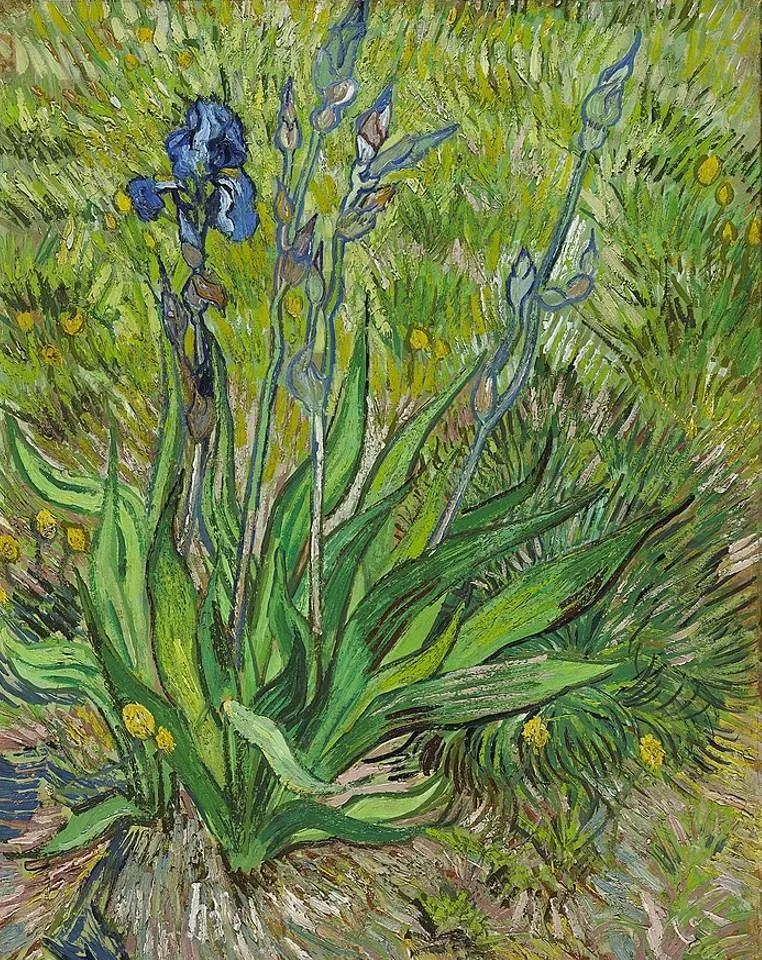
10. Hay Harvest at Éragny – Camille Pissarro
- Date created: 1901
- Dimensions: 53.9 × 64.7 centimeters (21.2 x 25.5 inches)
Hay Harvest at Éragny is a magnificent painting by Camille Pissarro (1830-1903), one of the most influential Impressionist artists of the 19th century. It’s one of the many paintings by the artist that depicts a scene of peasants doing their work in the fields.
This particular work depicts a scene in the small village of Éragny-sur-Epte which is situated in the Oise Department of northern France. The artist completed several works in this village spanning multiple decades. This painting was completed in 1901, just 2 years before the aging artist passed away.
